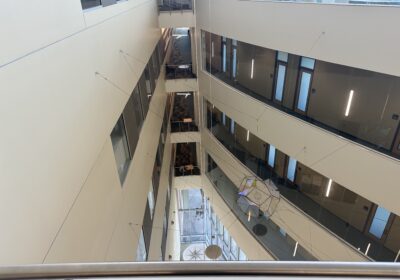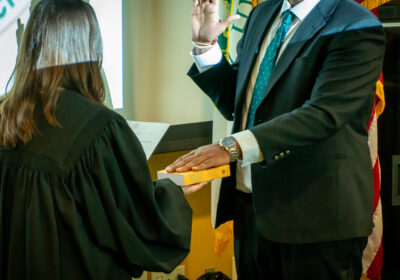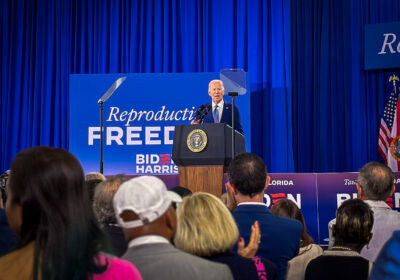A difficult balance
As USF prepares for the bustle of student life to return in about a month, the sting of the past legislative season is still fresh.
With about $50 million in cuts to the USF System, the university must find new ways to facilitate the same education.
Vice Provost for Strategic and Budget Planning Graham Tobin said USF will try to minimize what students feel of the blows to the budget.
Access and affordability are two key elements, he said. Of course, the other key element is quality. Are students going to see a change in the coming year? Thats a little tricky. Its possible. And Id stress its only possible. Were going to do everything we can to maintain the availability for students … and at the same time maintain the quality of our programs.
Class sizes, already among the highest student-faculty ratios in the state at 28:1, may increase. Some students may have to take early morning classes. Faculty may not be able to receive as attractive salary increase offers as before.
But keeping the focus on what exactly, a higher education means, is a difficult balance, Tobin said.
At the last Board of Governors meeting, USF was pressed by Governors looking to see if the university was on board with the states educational mission.
Questions were raised on the universitys plans to continue its commitment to producing more Science, Technology, Engineering and Mathematics (STEM) degrees. USF was chastised for its low graduation rates: In four years only 35 percent of students graduate, and in six years, 52 percent.
But though the university has implemented various programs over the past few years to improve its four- and six-year graduation rates, including requiring freshmen to live on campus and increasing the number of academic advisers. Tobin said the University will continue to look at how to improve its quality.
The BOG in some way is right, he said. They say were a very good university and theyre looking at us on par with the University of Florida. They say a good university should have a higher graduation rate. True. On the other hand, when we look at some of the other large, metropolitan-based universities, our graduation rates are actually higher. Then of course, we have (Association of American Universities) AAU aspirations, and when we compare ourselves with AAU institutions, were a little low.
More emphasis on job training will be made, and freshmen will be given more clearly defined paths to four-year graduation that will be handed to them in print when they arrive at the university.
Were not a training school or a vocational institution, Tobin said. We are here for a broad liberal arts education that includes science and engineering. But realistically, weve got to think about how students get jobs. Theres a certain dual responsibility here. Students do need to think at the beginning of their programs where they would like to be four of five years from now. There are occasions where you should be changing majors, but there should also be some sort of commitment so we can provide that high quality education in a particular area.
The University of Florida, which has the highest graduation rates in the state with 65 percent of students graduating within four years and 84 percent within six, attributes much of its success to a similar system that helps undergraduates focus their course schedules to enable quick graduation.
We think thats been a big factor in things, UF Spokesman Steve Orlando said. It helps keep students on track at a steady rate toward graduation, so they dont have any surprises and dont get off in the weeds in the progress toward their degree … It certainly is a challenge for all universities to balance access and quality.
Tobin, who said he doesnt speak for the universitys overall philosophy to education, said while he appreciates the broad range of courses undergraduates are able to take, more focus is necessary.
I come from the British system, where you go to a university to study a major, he said. Very few people change (majors), because its so difficult. Youre trained from probably when youre about 16 to narrow down and narrow down. I like the American system with a broader education that then gets into depth.
But weve got to move that, where you move into depth in a particular subject, perhaps a little earlier, he said. The extreme of the old British system and the extreme of the smorgasbord, take-what-you-like-for-as-long-as-you-like … somewhere weve got to find a compromise where we can have that broad education but then that depth in your particular area so you have strength and the necessary skills when youre looking for a job.
But Kathleen King, a professor in the department of adult, career and higher education, said focusing an education is not the solution.
What we call traditional students, those students who enter college at 18 or 19 years old generally, developmentally, they go through stages discovering what is their area of interest, she said. So narrowing their curriculum too soon, is really a disservice. If youre tracking people from middle school, which some places do, if you start tracking them from high school or even if you start too tightly tracking them in college, if they dont have Gen Ed requirements, this can really be a major problem.
As societal trends reflect adults changing careers more frequently, education should equip students for life, she said.
Think about how many times the average freshman changes majors within the first two years, she said. This has been going on 20-30 years. This is not a new pattern. Is there a big problem with that? Its a developmental issue. College is exploring content and discovering what it means to be a professional in these areas, and realizing what fits and what doesnt.
USF, King said, has done well with helping students with advising and academic support, she said. The bigger problem, she said, lies in the incomplete picture the state receives through limited metrics and the decision making process used to make cuts.
USF has lost about $125 million in state funds since 2007.







